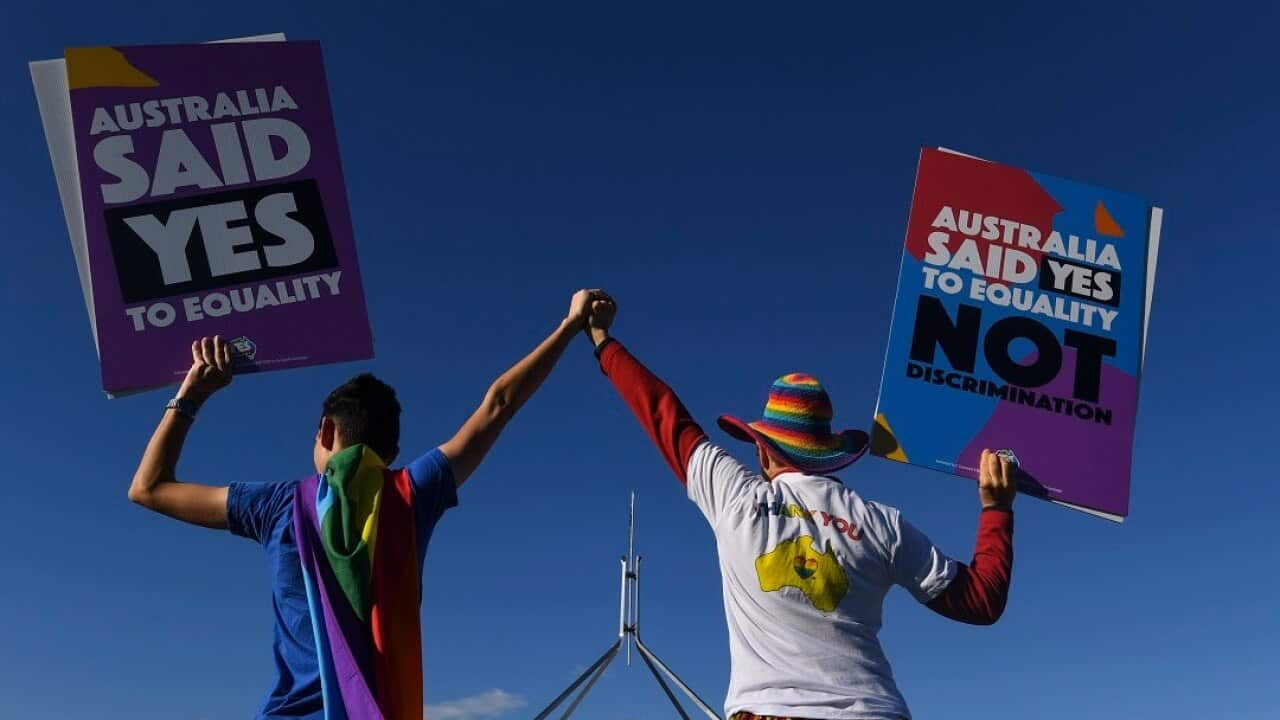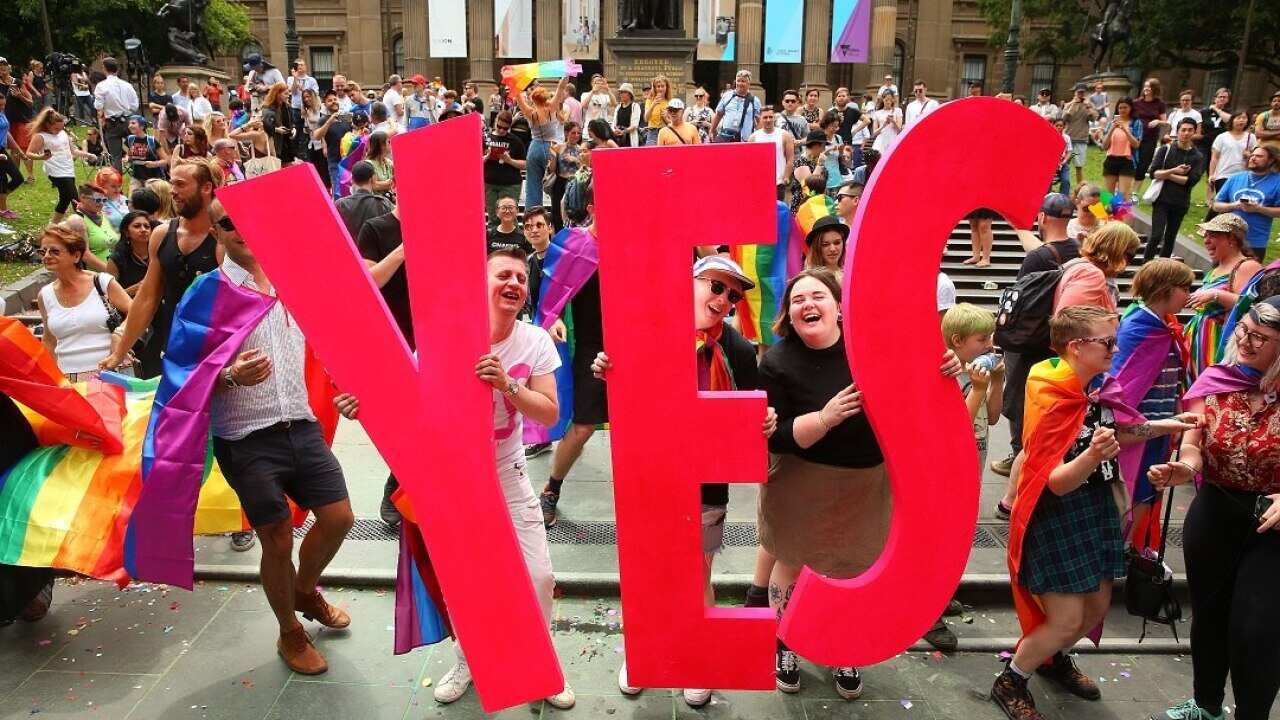The government had announced its intention to hold a postal survey on 10 August 2017. The team knew that if the survey was going to go ahead, we needed to increase resources available to fight this unique campaign and very quickly. By early the next morning, Tim Gartrell had been appointed to lead the campaign through the impending postal survey. Australians were told that over sixteen million forms were being mailed out from 12 September and that they needed to reach the Australian Bureau of Statistics (ABS) by 7 November at the latest to be counted.
This was a difficult an anxious time for so many, particularly children in rainbow families and members of the trans and gender diverse community who were the primary target of the NO campaign’s focus.
Survey forms started arriving more quickly than the campaign had been told to expect. Fortunately, the infrastructure to campaign had been set up and people were ready to campaign hard. While the national YES campaign headquarters was physically based in Sydney, other states and territories quickly established bases. Victorian Trades Hall quickly sprang into action became a major centre in that state.
A crack team of field directors across Australia got to work. Apart from Patrick Batchelor as national field director and Georgia Kriz and Audrey Marsh and NSW director and deputy director, other state directors were Nita Green in Queensland, Jacob White in the ACT, Emmanuel Cusack in South Australia, Pat Honan in the Northern Territory, Alex West in Tasmania, Emma Gibbens in Western Australia, and Will Stracke from Victorian Trades Hall Council as field director in that state.
While the infrastructure was set up and there were excellent, dedicated staff and volunteers at the helm, campaigners knew that if a YES was going to be returned, it would be up to people all across Australia to get out the vote in their own states, territories and communities. The campaign could provide information and resources but a win would need every day Australians to step up and do everything they could to make it happen. No one had wanted a public vote but now that it was here, losing would be unthinkable.
One of the first actions that the YES campaign set up was phone banking with the help of GetUP!. Phone banks ran in every state and territory and drew an extraordinary number of volunteers.. In Sydney, Audrey Marsh remembers:
I knew the campaign was so powerful because we did not have enough room for the number of phone callers we had. I remember literally stepping over people who were making phone calls in the hallways, in the fire stairs, just everywhere….and every type of person doing it. They made those phone calls without a break for two and a half hours. I could feel the momentum of it at the time.
Wil Stracke in Melbourne had a very similar experience with the phone banks organised through Victoria Trades Hall. She remembers a diverse group of volunteers, many of whom had never campaigned before, coming in on weekends to make as many calls as they could. On one Sunday afternoon, ninety people showed up for a two-hour phone bank.
We did not have enough lists, we did not have enough phones, we did not have enough food for people. We had people sitting on the front verandah at Trades Hall because we did not have enough chairs or rooms for them to make phone calls from, which was an amazing problem to have. It was fantastic.
Alex was one of the first people in campaign headquarters to receive his survey form, as metropolitan Sydney had been sent a batch of ballots earlier than expected. When Alex got home, alone in his apartment, he stared at the envelope from the ABS and said to himself, ‘There’s ten years of advocacy in a f**king envelope.’
The distressing reality that millions of Australians were receiving pieces of paper in the mail to judge LGBTIQ Australians suddenly hit him.
Dr Shirleene Robinson and Alex Greenwich MP are authors of 'Yes Yes Yes: Australia’s Journey to Marriage Equality' and board members of Australian Marriage Equality.



